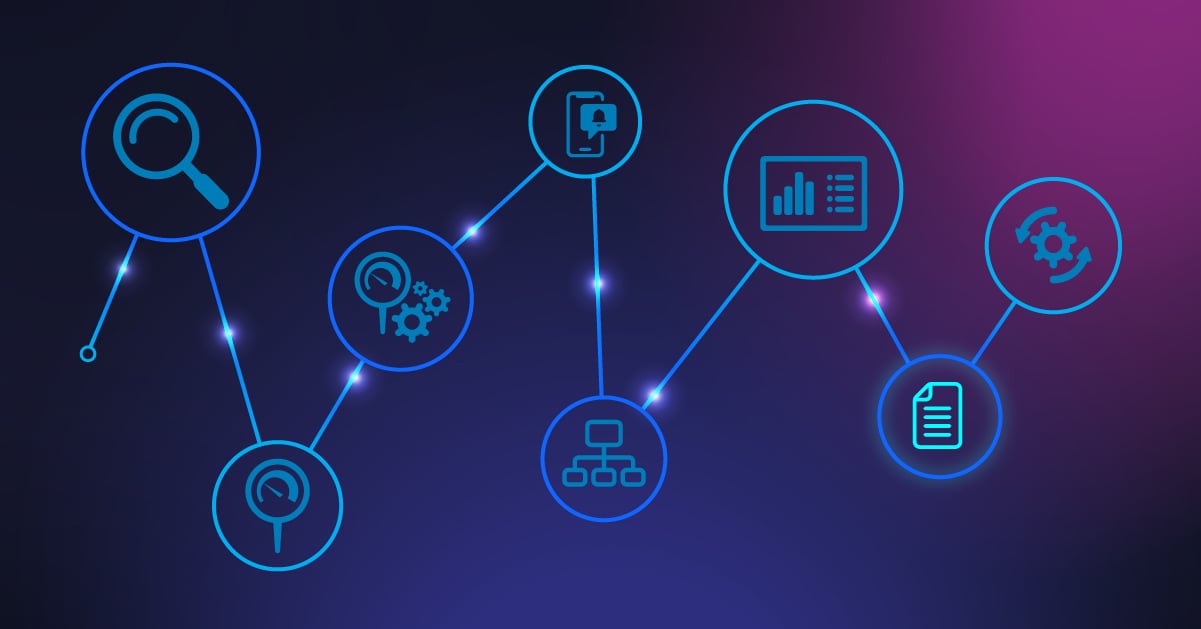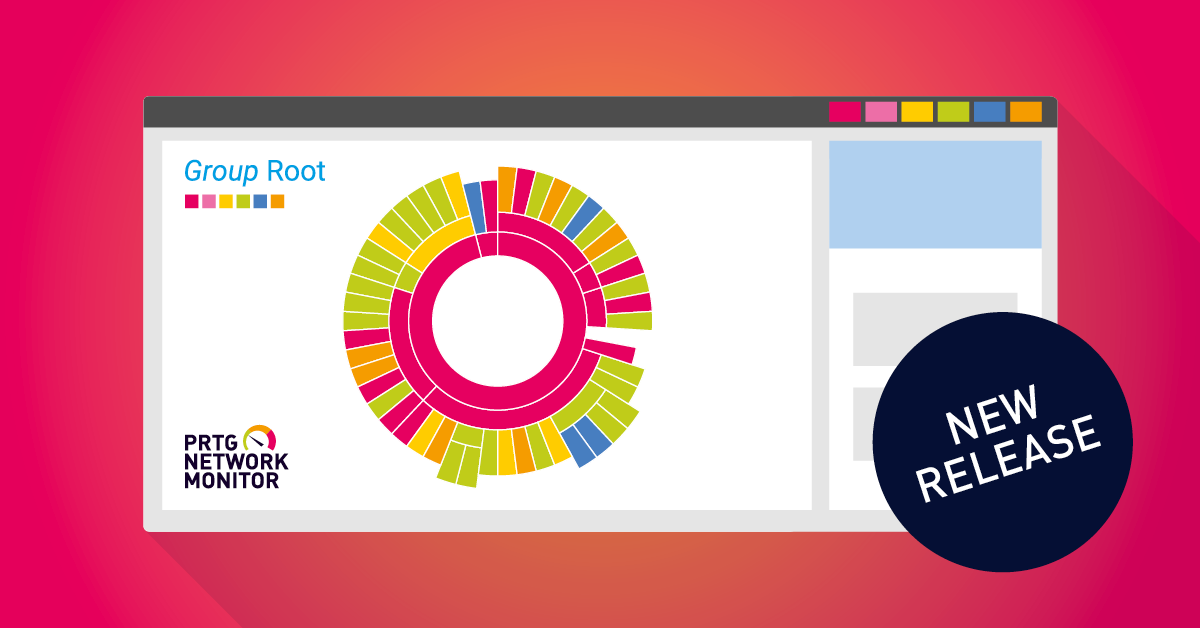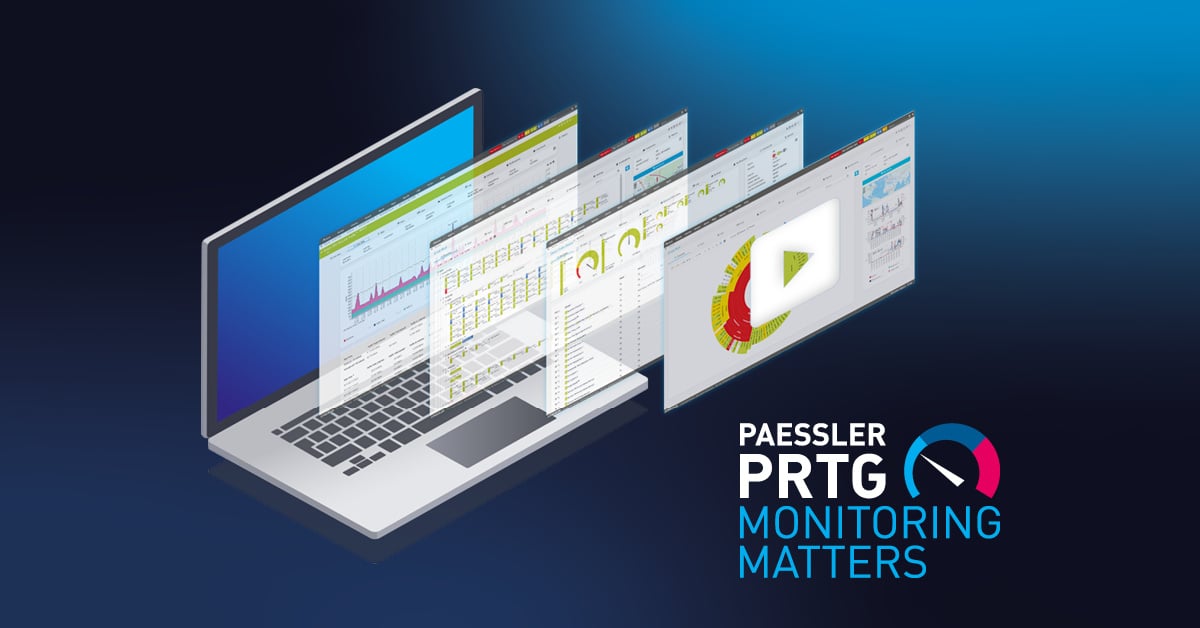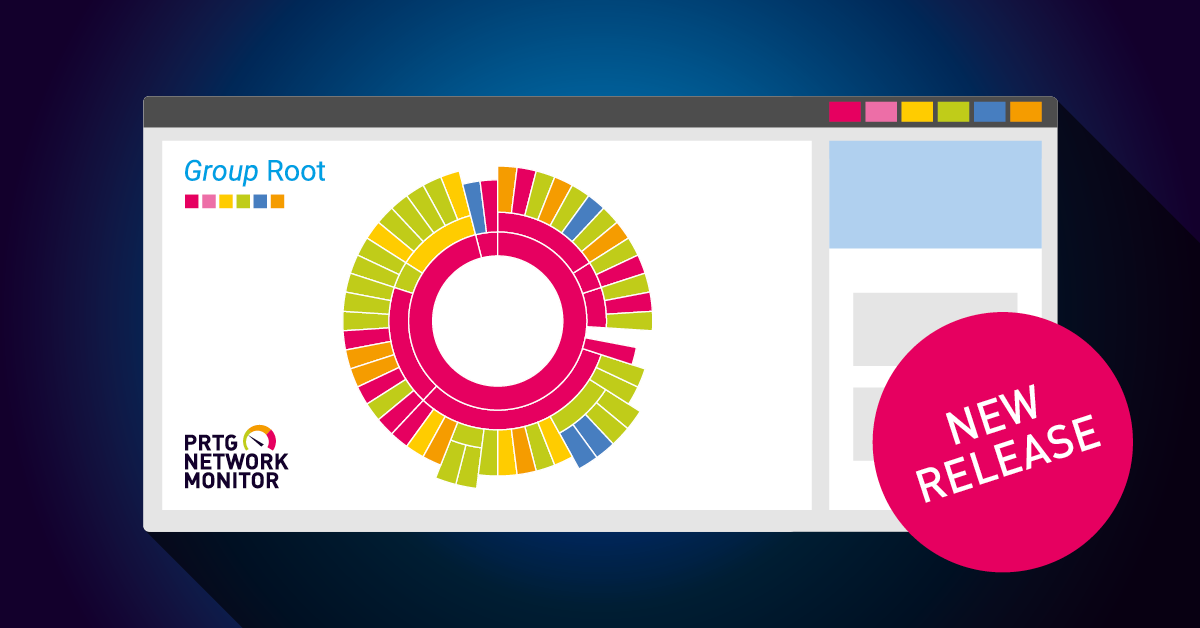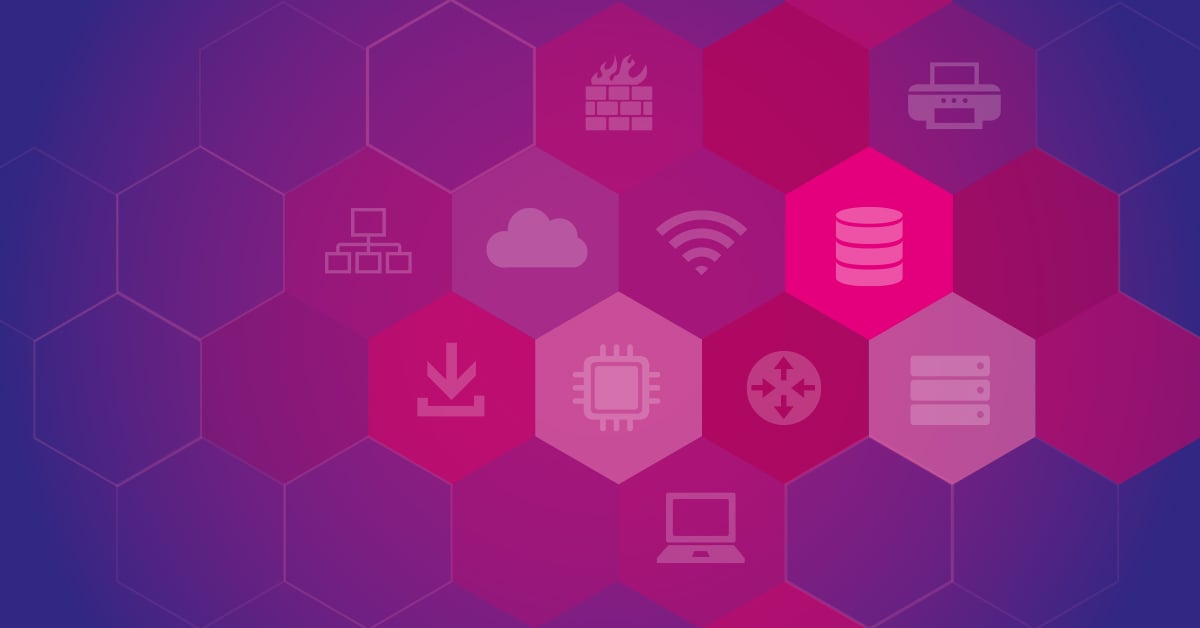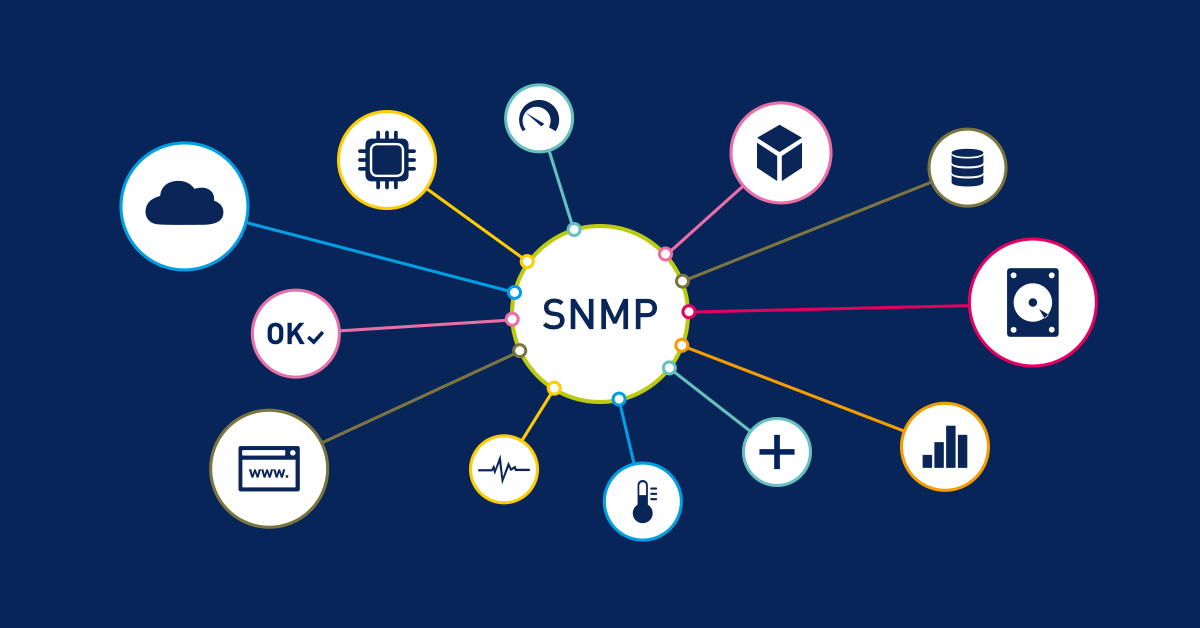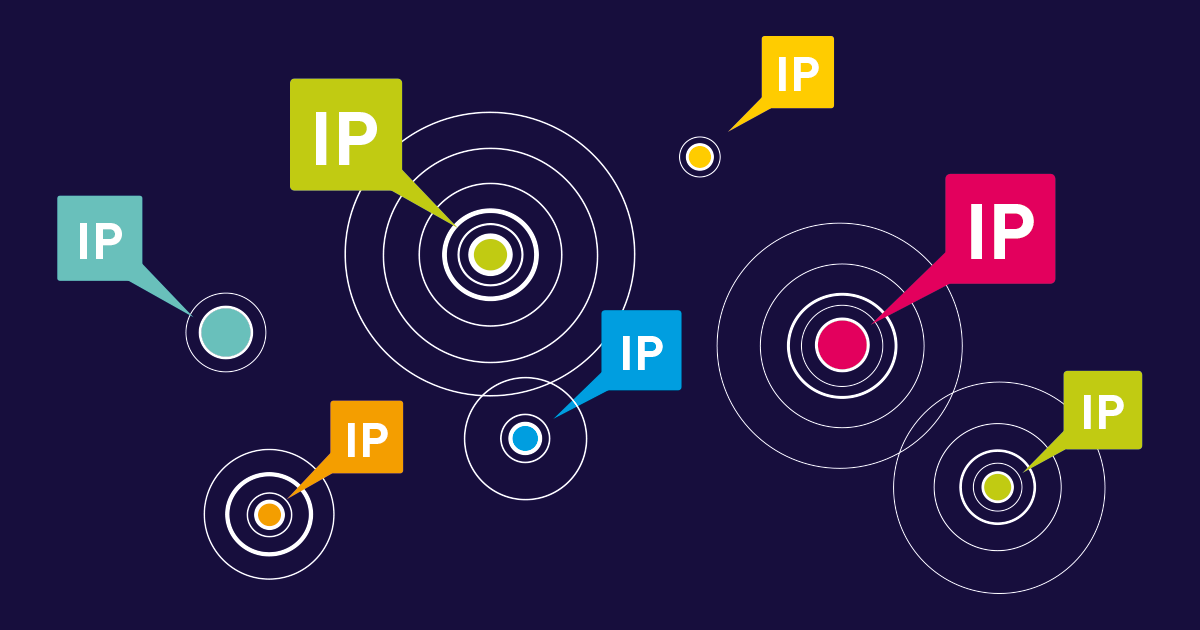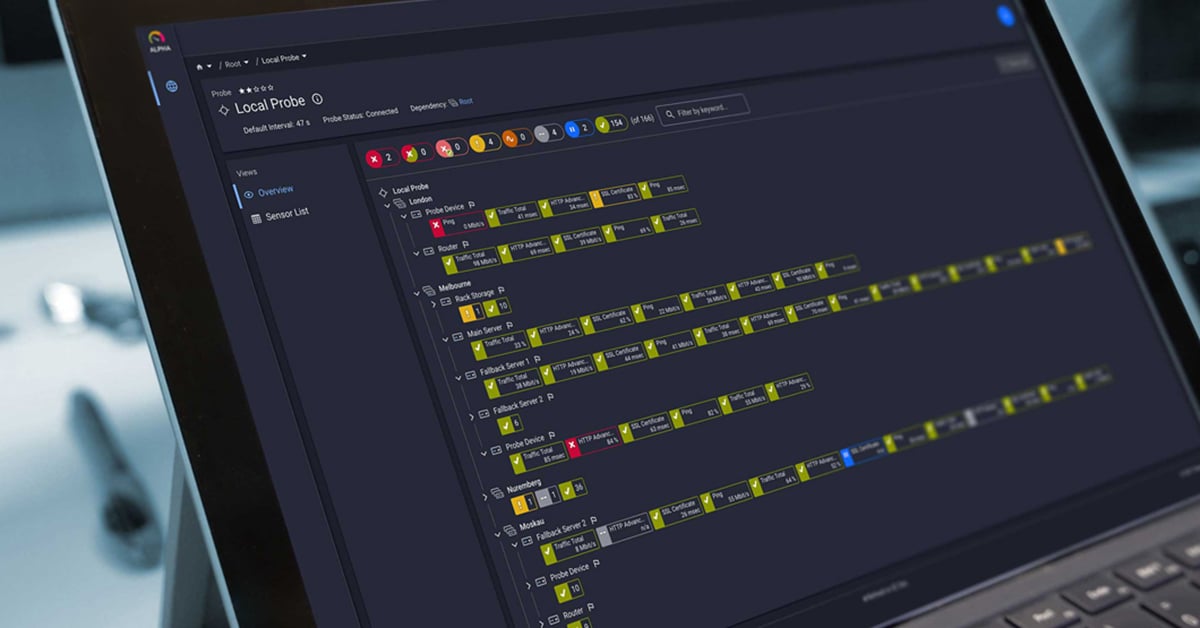You've organized your sensors into libraries and created visual dashboards. But what about sharing monitoring insights with stakeholders who don't access PRTG directly? This is where the powerful reporting capabilities from PRTG come into play. With reports, you can transform real-time monitoring data into formatted documents that are delivered automatically to anyone who needs them.
This week, we'll explore how to automate and customize reports in PRTG, ensuring that everyone from IT team members to executives get exactly the information they need, when they need it, and in a format they can easily understand.
Why reporting matters in your monitoring strategy
While dashboards are perfect for real-time monitoring, reports serve different but equally important purposes:
- Provide historical data analysis for trend identification
- Document system performance for compliance requirements
- Share monitoring insights with stakeholders outside IT
- Track service level agreement (SLA) compliance
- Support capacity planning and budgeting decisions
The key to effective reporting is automation and customization, which ensure that reports are consistently generated and contain the exact information that each audience needs. PRTG streamlines this process with its flexible reporting engine.
Watch this tutorial video to see how you can use the out-of-the-box reports in PRTG to quickly create valuable insights for different stakeholders:
Creating your first automated report in 5 simple steps
Let's walk through the process of setting up a report that automatically delivers weekly performance data to your team:
1️⃣ Add a new report
Begin by selecting "Reports" from the main menu in the PRTG web interface. Click "Add Report" at the bottom of the page and enter a descriptive name, such as "Weekly Infrastructure Performance." Choose a report template that matches your needs - PRTG offers several pre-configured templates for different purposes.
Define security settings to control who can access the report, then click "Create" to generate your new report configuration.
2️⃣ Select data sources
Now you need to specify which sensors to include in your report. PRTG offers several selection methods:
- Tags: Include all sensors with specific tags (e.g., "bandwidth" or "critical")
- Objects: Select specific devices, groups, or sensors to include
- Libraries: Use the libraries you created previously to organize your report content
For most reports, using tags or libraries provides the most flexibility, as new sensors that match your criteria will automatically be included in future reports.
3️⃣ Configure report settings
Next, define how your report will look and what data it will contain:
- Period: Choose the time span for the report (previous day, week, month, etc.)
- Schedule: Set when the report should be generated (one-time or recurring)
- Format: Select output formats (HTML, PDF, CSV, XML)
- Paper Size: Choose the paper format for PDF reports
- Template: Select the report style and layout
Pay special attention to the report period and schedule settings. For example, a weekly performance report might cover the previous week and run every Monday morning at 7:00 AM.
4️⃣ Set up delivery options
Once your report is configured, you need to specify how it will be delivered:
- Email: Enter recipient email addresses to send the report automatically
- File: Save the report to a specific folder on the PRTG server
- Both: Combine email delivery and file storage for maximum flexibility
For email delivery, you can customize the subject line and message body to provide context for recipients. You can also attach data files (CSV, XML) alongside the formatted report for recipients who want to perform their own analysis.
5️⃣ Test and refine your report
Before relying on your scheduled report, run it manually to check the results. Click "Run Report Now" to generate a test version and review the output. Make any necessary adjustments to the report configuration to ensure it meets your needs.
Pay attention to these factors:
- Is the time period appropriate?
- Are all relevant sensors included?
- Is the format readable and professional?
- Does the report contain the right level of detail for its audience?
Once you're satisfied with the results, your automated report is ready to deliver valuable insights to your team and stakeholders on schedule.
Take a look at this guide to get more details:
👉 How to set up reports in PRTG in 5 easy steps
Report types for different audiences
Different stakeholders need different information. Let's explore some common report types and how to customize them for specific audiences:
📊 Executive overview
Create high-level reports focused on business service availability and performance metrics that matter to leadership. Keep these reports concise, with clear visualizations and minimal technical detail. Include:
✅ Overall system availability percentages
✅ SLA compliance statistics
✅ Performance trends for business-critical applications
✅ Summary of major incidents and their resolution
Executive reports should translate technical data into business impact, helping leaders understand how IT performance affects operations.
🔍 Technical performance reports
For IT team members who need detailed performance data, create comprehensive reports that include:
✅ Detailed sensor statistics
✅ Performance graphs showing trends over time
✅ Resource utilization across systems
✅ Top performers and problem areas
Technical reports can include more detailed data tables and graphs, as the audience has the expertise to interpret them.
📈 Capacity planning reports
Support infrastructure planning, such as storage capacity, with reports focused on resource utilization trends:
✅ Storage growth rates
✅ Bandwidth utilization patterns
✅ CPU and memory usage trends
✅ Forecast projections based on historical data
These reports help identify potential bottlenecks before they impact performance and provide data to justify upgrade requests.
⏱️ SLA compliance reports
Document service level agreement compliance with reports that show:
✅ System availability percentages
✅ Response time statistics
✅ Downtime incidents and duration
✅ Performance against defined thresholds
SLA reports are often required for both internal and external service agreements and may be needed for compliance purposes.
Advanced reporting techniques
Once you're comfortable with basic reports, try these advanced techniques to make your reporting even more effective:
🧩 Customize report templates
Create custom templates that match your organization's branding by copying existing templates from the PRTG installation directory (\webroot\reporttemplates) and modifying the HTML and CSS. This ensures reports contain exactly the information your stakeholders need.
🧩 Use data export for custom analysis
Export raw monitoring data in CSV or XML format for advanced analysis. Include the data files as attachments in report emails, or use the PRTG API to extract custom data - perfect for combining monitoring data with information from other systems!
🧩 Create report sets for different audiences
Create targeted reports for specific stakeholders. For example, provide daily operational reports for IT staff, weekly summaries for department managers, monthly reports for executives, and quarterly analyses for capacity planning. This ensures that everyone receives relevant information without being overwhelmed by unnecessary detail.
🧩 Combine reports with maps for maximum impact
Configure maps for public access to include links to relevant PRTG maps in your report emails. This allows recipients to access historical data from the report as well as real-time status information through the interactive map.
Best practices for effective reporting
💡 Keep reports focused and relevant
Each report should have a clear purpose with only essential information. Create multiple targeted reports rather than one comprehensive report that tries to do everything.
💡 Use appropriate time periods
Match report periods to your analysis needs: daily for operational metrics, weekly for trends, monthly for strategic overview, and quarterly for long-term analysis. This shows meaningful patterns without overwhelming detail.
💡 Combine automation with manual insights
Enhance automated reports with human commentary: deliver reports to a team member first, have them add context and observations, then forward to the broader audience. This human touch helps recipients understand the significance of the data.
💡 Schedule reports strategically
Time your reports for maximum impact: daily reports before workday start, weekly summaries Monday morning, monthly reports at month beginning, and quarterly reports before planning meetings. This ensures information is available when decisions are made.
Taking action: Your next steps
Ready to elevate your PRTG reporting? Here are some practical next steps:
1️⃣ Identify key stakeholders and what information they need
2️⃣ Create a report plan that defines report types, schedules, and recipients
3️⃣ Set up your first automated report focused on a specific, high-value use case
4️⃣ Gather feedback and refine your reports to better meet stakeholder needs
5️⃣ Explore custom templates for reports that perfectly match your requirements
Remember that effective reporting evolves over time. Start with simple, focused reports and gradually expand your reporting strategy as you learn what works best for your organization.
In next week's article, we'll explore how to optimize sensor performance, ensuring your monitoring system runs efficiently while providing the data you need. Until then, enjoy creating reports that turn your monitoring data into actionable insights!
 Published by
Published by 